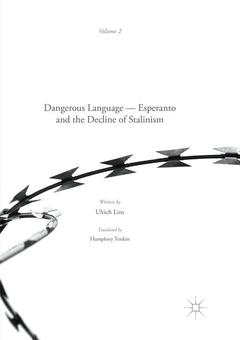Description
Dangerous Language — Esperanto and the Decline of Stalinism, Softcover reprint of the original 1st ed. 2017
Author: Lins Ulrich
Language: English
Approximative price 29.53 €
In Print (Delivery period: 15 days).
Add to cartSupport: Print on demand
Description
/li>Contents
/li>Biography
/li>Comment
/li>
Examines in depth that sad fate of the internationalist movement for a new world language, Esperanto
Offers the reader insight into archival materials documenting the persecution and mistreatment of the speakers and supporters of Esperanto in the modern ideological landscape of the 20th century
Uncovers the resurrection of Esperantism in the late Soviet period, suggesting its contribution to the downfall of the Soviet Union




